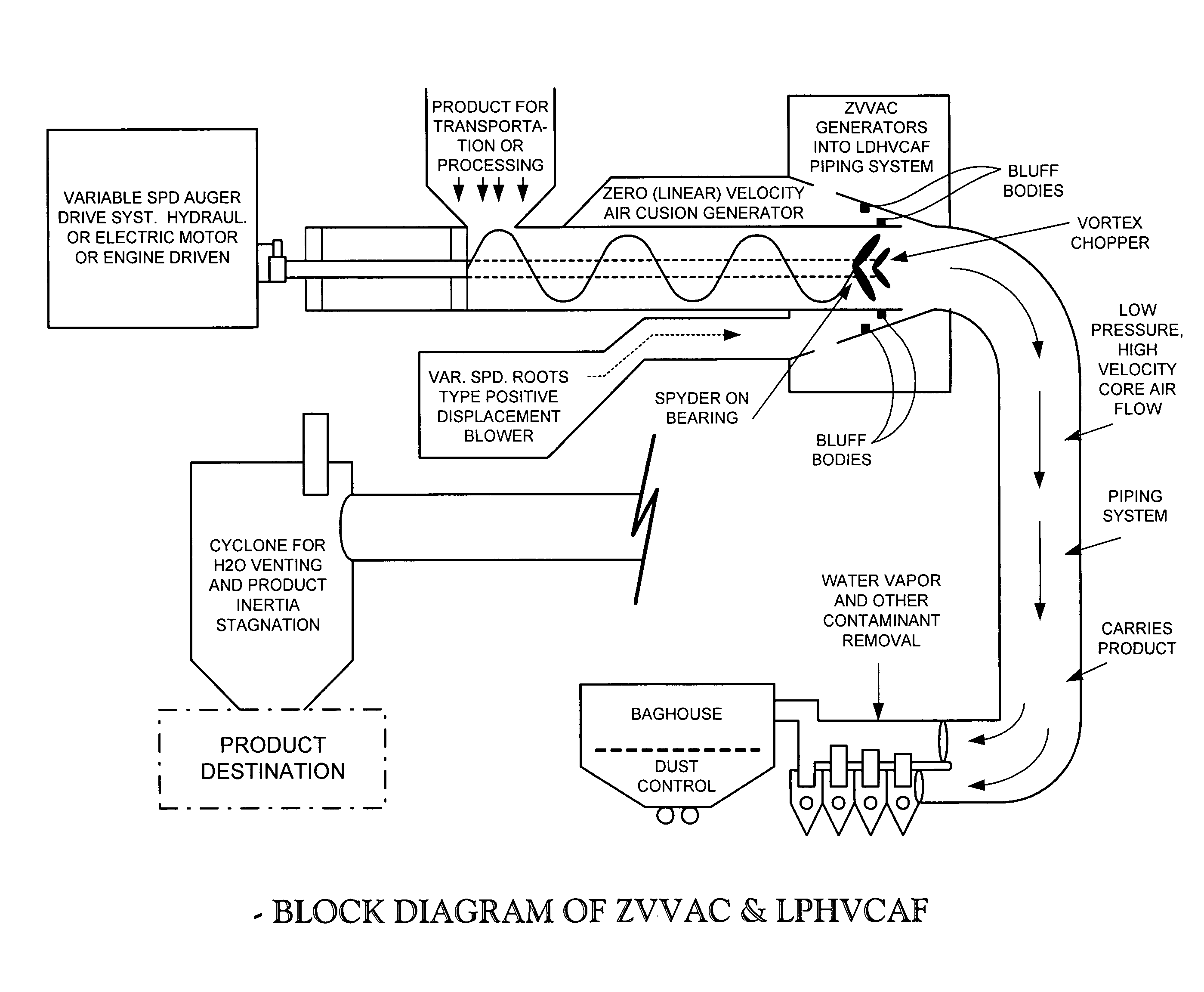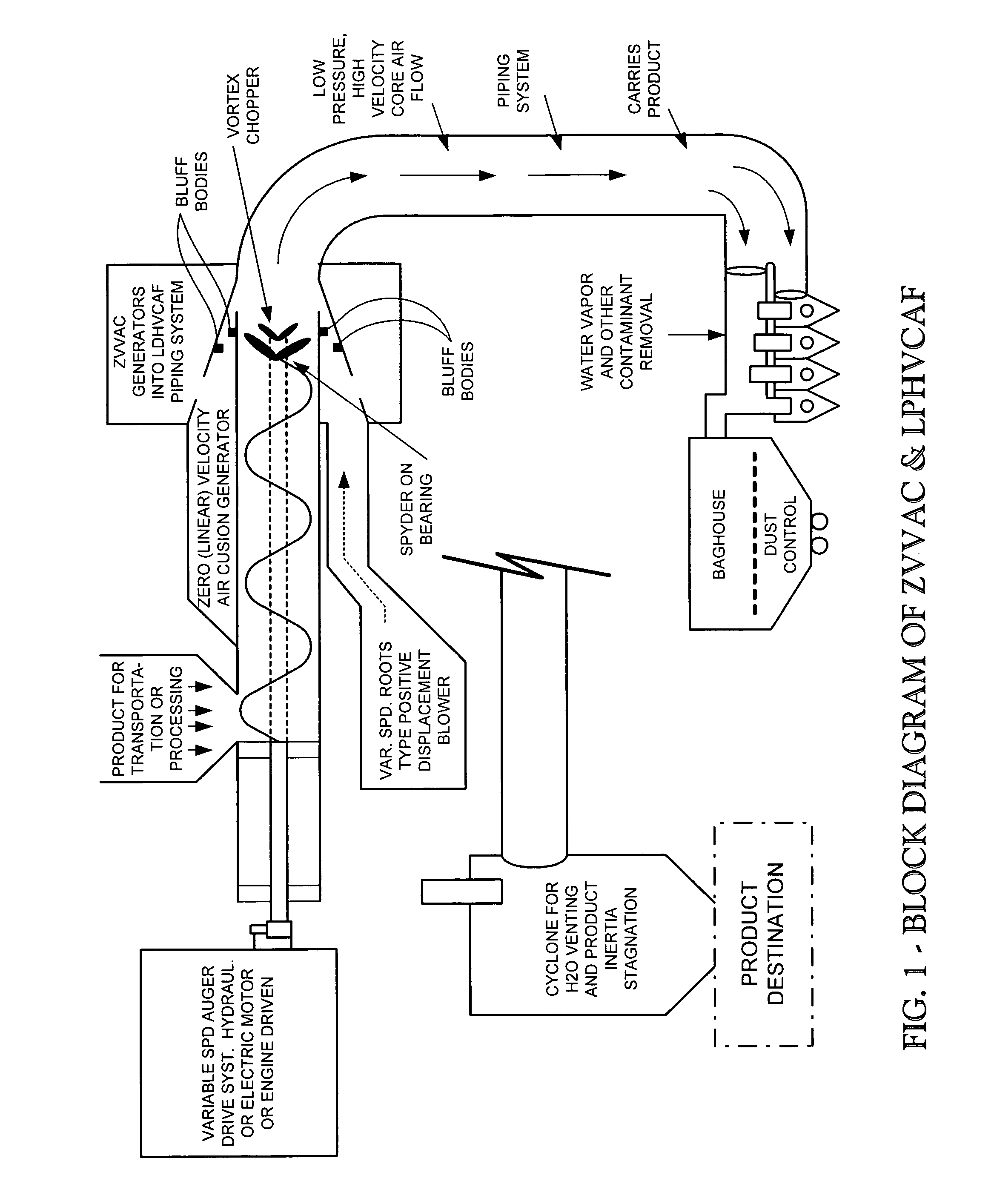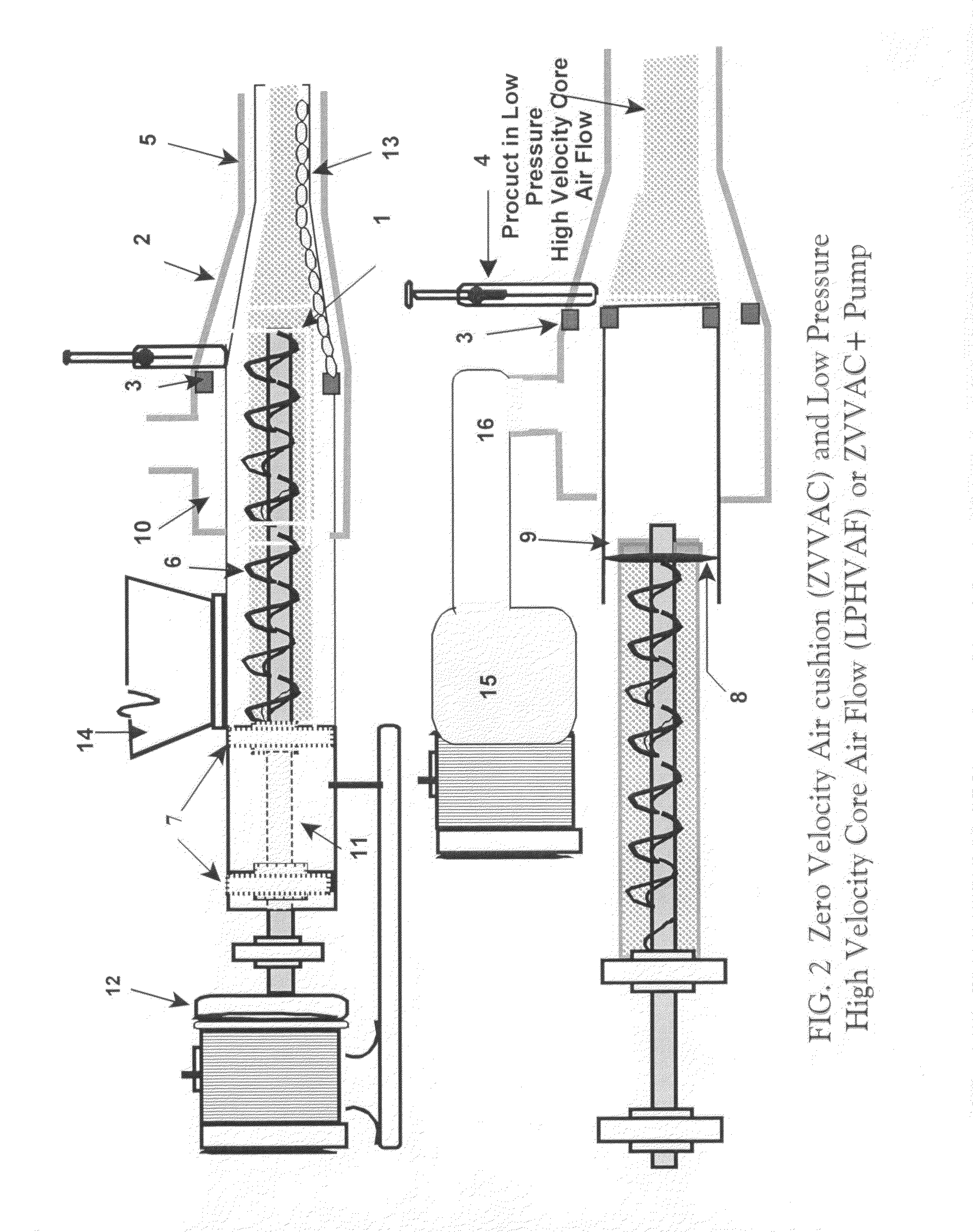Low-pressure, air-based, particulate materials transfer apparatus and method
a technology of particulate materials and transfer equipment, which is applied in the field of low-pressure air-based, particulate material transfer equipment and methods, can solve the problems of increasing dramatically the manufacturing, maintenance, and especially the operational energy costs, and little evidence in the literature that any major consideration has been given, and achieves the effect of reducing electrical (or mechanical) energy requirements and reducing product friction
- Summary
- Abstract
- Description
- Claims
- Application Information
AI Technical Summary
Benefits of technology
Problems solved by technology
Method used
Image
Examples
Embodiment Construction
[0022]In the preferred embodiment(s) of this system, incorporation of the previously described features are utilized as they are selected from the following engineered specifications and ZVVAC+ pump features requirement list:[0023]NOTE: Since ZVVAC+ pump-systems are “product specific” the following list-items must be considered for each application, and sometimes location.[0024]1. Product line size (pipe Diameter and Pump size) as related to TPH (tons per hour) capacity and type of product being handled.[0025]2. Configuration and taper of airflow control nose cone.[0026]3. Spacing between auger barrel-vortex generator(s) and nose cone air chamber wall.[0027]4. Product velocity—air requirement-volume & velocity in the piping system.[0028]5. Product insertion velocity—determined by setting the variable speed auger RPM or product metering parameters.[0029]6. Auger pitch, vortex placement and other auger features to generate a zero linear vortex velocity air cushion on inside of product...
PUM
 Login to View More
Login to View More Abstract
Description
Claims
Application Information
 Login to View More
Login to View More - R&D
- Intellectual Property
- Life Sciences
- Materials
- Tech Scout
- Unparalleled Data Quality
- Higher Quality Content
- 60% Fewer Hallucinations
Browse by: Latest US Patents, China's latest patents, Technical Efficacy Thesaurus, Application Domain, Technology Topic, Popular Technical Reports.
© 2025 PatSnap. All rights reserved.Legal|Privacy policy|Modern Slavery Act Transparency Statement|Sitemap|About US| Contact US: help@patsnap.com



